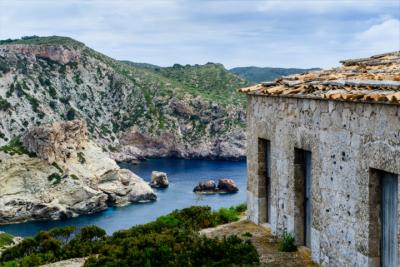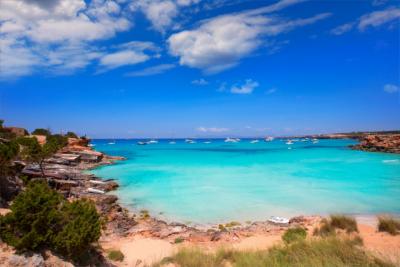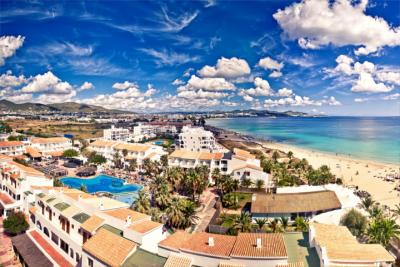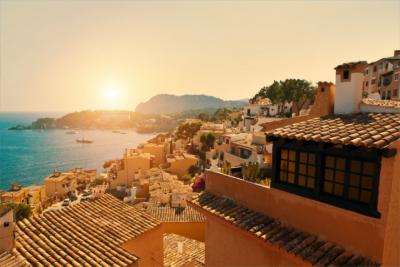Travel Offers
Travelmyne Featureprint
Distance
Majorca - Parties, Sun, Beach and more
Most people think of wild parties when they hear the word "Majorca". The island, however, also offers beautiful beaches for relaxing and wonderful landscapes with harsh mountains, fascinating coasts and a rural idyll. In addition, it accommodates many historical treasures from different cultures.
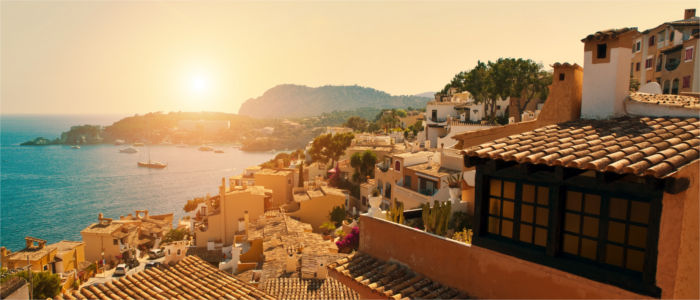
Geography - The greatest Balearic island
Majorca is the biggest Balearic island and is located about 170 kilometres south-east of Spain in the Mediterranean Sea. It is almost 100 kilometres long and 80 kilometres wide. The island's north-west is covered in rugged mountains with heights of over 1,000 metres and the Puig Major (1,445 m) as Majorca's highest peak. These mountains descend towards the sea. The island's heartland consists of hills and the central plain Es Plà. Another mountain range crosses the east. Majorca's south, on the other hand, is relatively flat. The Mediterranean climate creates mild winters (15 °C on average) and hot summers (about 30 °C).
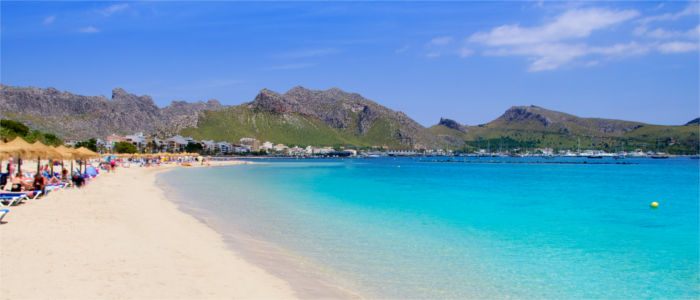
Nature - Endlessly vast groves of almond trees
Majorca's landscape is very varied. The mountains fascinate with their harsh, native nature. Despite the barren environment, the rugged, bright rocks are vegetated by many plants - grasses, hardy shrubs, oaks and pines. The slightly wavy central plain is covered in endlessly vast fields and groves of olive, fig and almond trees. Especially the latter are characteristic of the island. There are numerous fine sandy beaches at the coast but also parts which consist of bizarre rock formations and many caves. Majorca is most of all a paradise for birds (cinereous vultures, flamingos, the puffinus and herons) as well as reptiles (tortoises and the common midwife toad). Other typical animals are the goats, which have been returned to the wild.
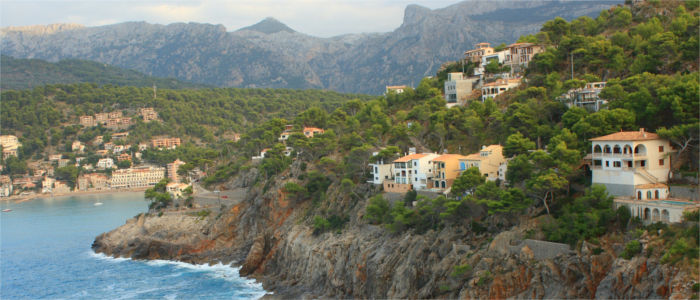
Natural sights – Exploring Torrent de Pareis, Cap de Formentor and the caves
A spectacular natural highlight is the gorge of Torrent de Pareis. It leads you from the mountains to the sea to the distinctive estuary mouth, which is flanked by rocks. The native, beautiful landscape of Formentor Peninsula invites visitors to go hiking and offers many spectacular observation points. Cap Formentor has a well-known lighthouse and constitutes the island's most northern point. The Cuevas de Arta, which are located at the cliff coast in the east of Majorca, are another worthwhile sight. The Caves of Drach (Spanish: Coves del Drac) with their underground lakes are very popular with tourists. This network of limestone caves near Porto Cristo is two kilometres long and used as a venue for classical concerts. Travellers who want to get to know the unspoiled Mediterranean landscape should go to Cabrera, the smallest uninhabited Balearic island. This island in the south of Majorca is characterised by its sensitive, fascinating ecosystem. Visitors gain insights into the island's native nature in the conservation areas Mondragó, S'Albufera and Ses Salines. Great locations for relaxing in the sun are the beaches Playa de Palma, Cala Millor, Cala Ratjata and Alcudia bay.
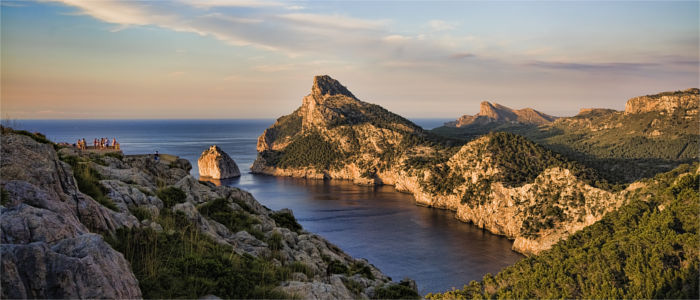
Culture - Between open-mindedness and tradition
The first settlers reached Majorca about 6,000 years ago and probably settled at the coast first. Then the Phoenicians and the Romans arrived. The latter are responsible for the island's name "Maiorica", which means "big island". The Vandals and Moors also conquered the island before it became part of Spain in the 15th century. Majorca's inhabitnats are characterised by their open-minded nature. They extend a warm welcome to the many tourists which visit their island. Majorca is a particularly popular holiday destination with German people and is often jokingly called Germany's "17th state". Despite all the vibrant activity which surrounds them, the island's population keeps its own identity because traditions rate high on the island. This is apparent from art handicraft such as glass-blowing, carvings from olive tree wood or embroidery. Besides the official language Spanish, the population speaks the vernacular mallorquí.
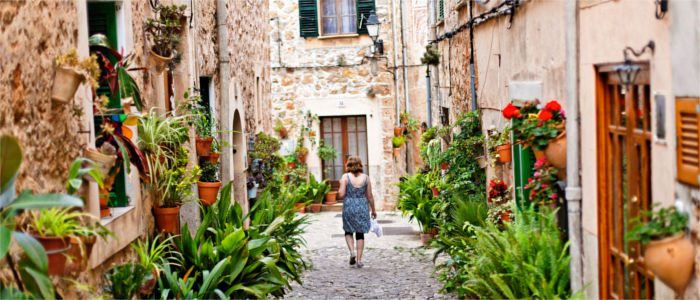
Cultural sights - A magnificent cathedral and time-honoured monasteries
The capital Palma is without doubt the island's economic and cultural centre. At its beach you find the famous party location Ballermann 6. In addition, Palma holds wonderful cultural treasures, which show its varied history. A particularly impressive example is the sandstone cathedral La Seu. On its way through the gigantic, magnificent rosette windows of the cathedral, which is 110 metres long, the light creates a fascinating play of colours. Walking through the small, winding alleys in Palma's old town, visitors feel like they have travelled into the past. The city is also a great location for shopping. A bit outside of the city you find the impressive fortress Castell de Bellver, which offers a great view of Palma and the sea. Travellers who want to learn about the daily life in the service of religion can visit the monastery Santuari de Lluc. It was built against a mountain in the 13th century and displays beautiful paintings. Valldemossa stands out among the placid mountain villages. This charming small place is known for its monastery, which the famous composer Frédéric Chopin once visited to find some peace and quiet. Alcudia is also worth seeing. You can visit the ruins from the Roman period or make a trip through its scenic bay.
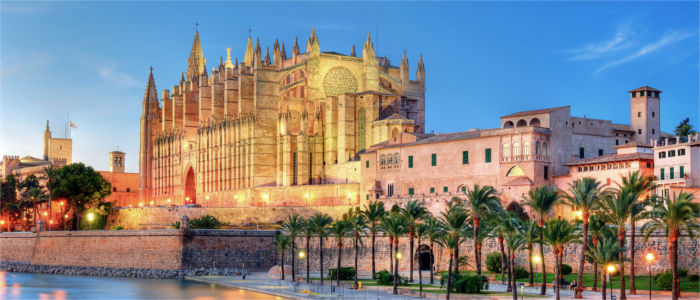
Experience - From the exciting nightlife to the wonderful almond blossom
Celebrating, dancing, having fun – Majorca is a first-rate destination for party-goers. The island offers a variety of bars, clubs and discos, which offer colourful, light-hearted entertainment at night. Many visitors are drawn to the Ballermann at the beach of palma. It comprises 15 bars (balnearios), including the famous no. 6. The beach mile has the reputation that it hosts the wildest, most exuberant parties on the island. Majorca is generally known for excessive partying. Part of this is the famous drinking of sangria from buckets and the schlager music. Besides the extensive night-time entertainment, there is also a wide range of family activities and offers for children. A particularly popular attraction is a ride on the historical train between Palma and the beautiful seaport town Soller in the west of the island. It leads you through a magical landscape but also through a long gigantic tunnel in the mountain. A visit to the Safari Zoo in Sa Coma also promises adventure. Driving around in a car, you can marvel at numerous African animals. Travellers also find amusement in the Marineland Majorca with its sea lion and dolphin shows or in the Palma Aquarium. Many visitors come to Majorca to experience the spectacular blossom of the thousands of almond trees from the end of January to the beginning of March. A trip to the fishermen's village Cala Figuera, where houses which are typical of the island line a scenic bay, is an equally placid experience. You can also visit the artists' town Deià with its beautiful orange groves and age-old olive trees. A drive on the serpentine road Sa Calobra is a tourist attraction with a difference. It consists of a route, which is 12 kilometres long and has many thrilling turns. The road leads you from the mountains into the scenic bay of Sa Calobra. On a visit to the pearl factory in Manacor you see how the immaculate jewels are produced. Visitors gain an insight into the local life on the market in Sineu. Groceries, everyday goods, animals, ceramic ware and souvenirs are sold here every Wednesday. In addition, travellers can learn about the tradition of vineyard and grain cultivation on the estate Els Calderérs in Sineu, which has been converted into a museum. Regarding the cuisine, soups and the appetisers tapas are very popular on Majorca. Fish in all kinds of varieties is also part of many of the island's dishes. One of them is the pastry roll ensaïmada.
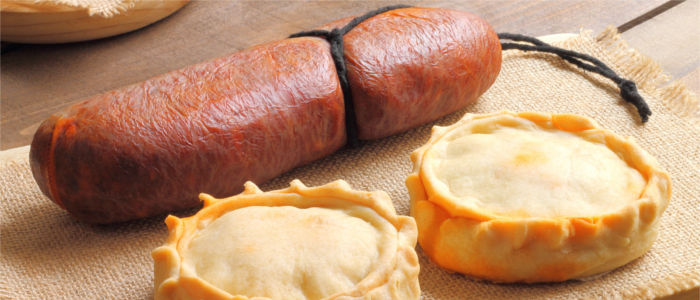
Activities - All about sunny holidays at the seaside
The sun paradise Majorca offers ideal conditions for relaxation and recreation. It basically offers everything you can do on an island. Visitors can relax at the beautiful, magical beaches or swim and snorkel in the pleasantly warm water. Those who want more action, will enjoy the great variety of water sports, which includes surfing, water skiing, sailing, canoeing and jet-skiing. The scenic mountains are a first-rate location for going hiking, climbing or mountain biking. The island's landscape is generally suited for trips on foot or by bike. Furthermore, you can go horseback riding. Segway tours are becoming increasingly popular and Majorca offers many opportunities for golfing. In Palma, you can drive a Formula One vehicle and a balloon flight is the perfect way of watching the vibrant island life from above.
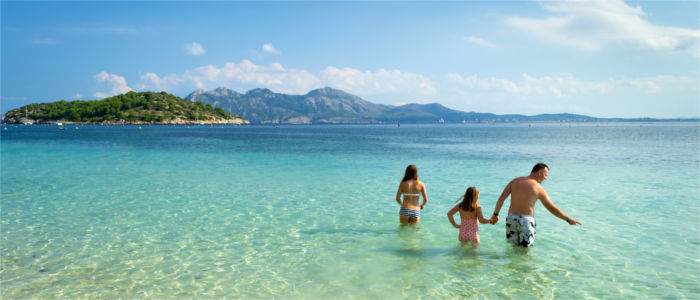
Information
The island's central airport is located in Palma (PMI). Holidaymakers can also arrive by ship or ferry, which means that they can take their cars with them. A great way of getting to know the island, especially its heartland, is by car - be it your own or a rental. Furthermore, there are tours which take you to all tourist destinations, for example by bus or boat. Spanish is the island's official language but you can also communicate in German or English.
Majorca is not one of the Europeans' most popular travel destinations for no reason. Holidaymakers who want to relax in the sun at the seaside find first-rate conditions here. Party-goers also get their money's worth on Majorca. Those who are looking for sports and activity do not go short either. The scenic Mediterranean landscape with coasts, mountains and the rural idyll is the perfect destination for lovers of nature.


